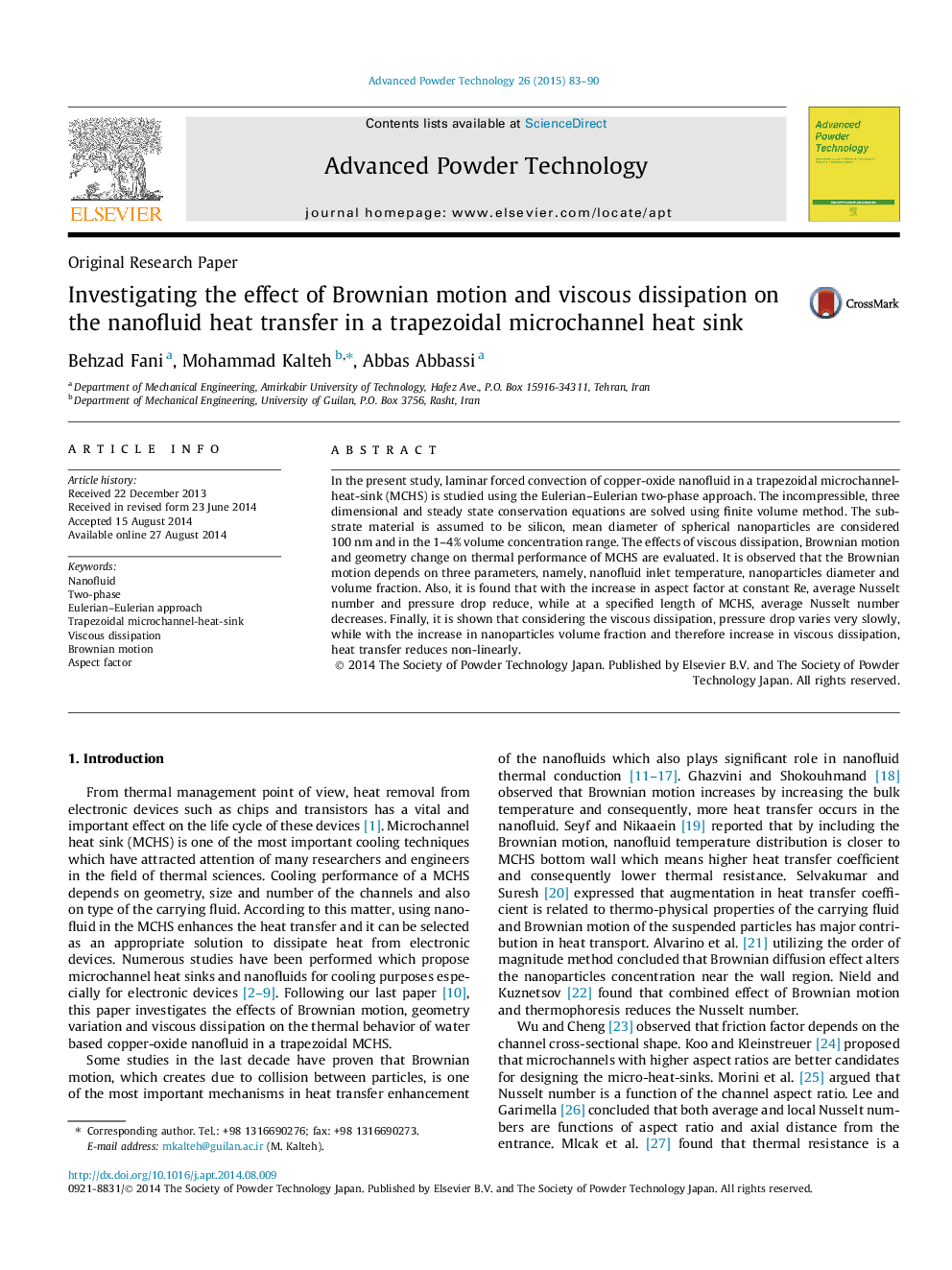| کد مقاله | کد نشریه | سال انتشار | مقاله انگلیسی | نسخه تمام متن |
|---|---|---|---|---|
| 144631 | 438942 | 2015 | 8 صفحه PDF | دانلود رایگان |
• Effect of Brownian motion and viscous dissipation on the heat transfer is investigated.
• Two-fluid model is used for nanofluid heat transfer simulation.
• Brownian motion depends on nanofluid inlet temperature, diameter and volume fraction.
• With the increase in aspect factor at constant Re, average Nusselt number reduces.
• With increase in viscous dissipation, heat transfer reduces non-linearly.
In the present study, laminar forced convection of copper-oxide nanofluid in a trapezoidal microchannel-heat-sink (MCHS) is studied using the Eulerian–Eulerian two-phase approach. The incompressible, three dimensional and steady state conservation equations are solved using finite volume method. The substrate material is assumed to be silicon, mean diameter of spherical nanoparticles are considered 100 nm and in the 1–4% volume concentration range. The effects of viscous dissipation, Brownian motion and geometry change on thermal performance of MCHS are evaluated. It is observed that the Brownian motion depends on three parameters, namely, nanofluid inlet temperature, nanoparticles diameter and volume fraction. Also, it is found that with the increase in aspect factor at constant Re, average Nusselt number and pressure drop reduce, while at a specified length of MCHS, average Nusselt number decreases. Finally, it is shown that considering the viscous dissipation, pressure drop varies very slowly, while with the increase in nanoparticles volume fraction and therefore increase in viscous dissipation, heat transfer reduces non-linearly.
Figure optionsDownload as PowerPoint slide
Journal: Advanced Powder Technology - Volume 26, Issue 1, January 2015, Pages 83–90
